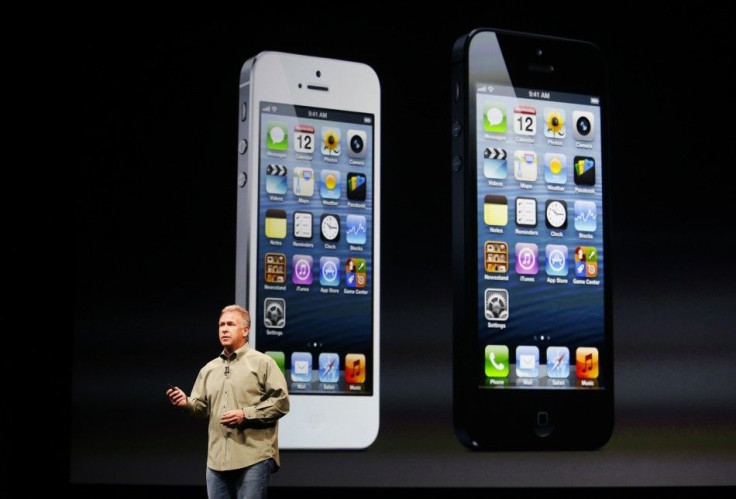iPhone 5: New Connector Spells Profit For Cheng Uei, Molex, Amphenol

As Apple (Nasdaq: AAPL), the world's most valuable technology company, finally rolls out its iPhone 5 Friday, millions of customers will be faced with charging and recharging it using the new, smaller Lightning connector. As many as 10 million iPhone 5s may be sold by Monday, analysts reckon.
For the first time since 2007, the Cupertino, Calif., tech titan has trimmed this vital component to only eight pins from 30 pins, cutting its overall dimensions to adjust to the iPhone 5’s thinnest-ever dimensions. The new device measures 4.87 inches by 2.31 inches with a depth of only 0.30 inches, which meant the connector had to shrink.
While Apple will sell two adapters, for $39 and $29, starting next month that will be compatible with old chargers for the iPhone 4S and its ancestors, over time many users will require new ones.
Who benefits?
Three giants of the connector industry, headed by Taiwan’s Cheng Uei Precision Industry (Taipei: 2392), which has about a 55 percent share of Apple’s connector orders, followed by American giants Molex Inc. (Nasdaq: MOLX), of Lisle, Ill., and Amphenol Corp. (NYSE: APH), of Wallingford, Conn., each with about 10 percent, estimates UBS analyst Steven Milunovich.
Given that analysts expect as many as 52 million iPhone 5s to be sold by year-end, plus expectations that Apple will deploy the same connector in upgraded versions of the iPad, business ought to be good for these companies. Furthermore, consumer electronics makers of devices like clocks and stereos with iPhone charges, gym equipment for iPhone rests and other products will need to order the same devices.
Chances are other key connector makers, such as TE Connectivity (NYSE: TEL) of Switzerland and others will adapt as well as their smartphone and device customers scale downward. Given that the connector makers also have huge markets in the automotive sector, there’ll be an incentive for new chargers to hold iPhones and competitors.
One caveat: Connectors are not microprocessors like the A6 chip that powers much of the iPhone 5 and the LTE chip from Qualcomm Inc. (Nasdaq: QCOM) that connects it to mobile carriers. They cost around $35 apiece. The first Lightning connectors may cost $4 or $5 but over time will cost far less.
Shares of Cheng Uie Precision have been on tear lately, gaining more than 16 percent since June and 18 percent year-to-date. They closed Thursday at 70 New Taiwan dollars (USD $2.39). The company previously said third-quarter revenue is expected to rise 30 percent, rather than the previously expected 20 percent, in part because of new Apple business.
Molex, which closed at $27.60, down 19 cents on Thursday, is up nearly 11 percent since June and 16 percent this year. Long closely connected to consumer electronics, computer and automotive customers with offshore manufacturing, the Illinois connector giant should also benefit from iPhone 5 mania.
Amphenol, another likely supplier, closed at $61.89, down 52 cents Thursday. Its shares have advanced 9 percent since June and 36 percent in 2012.
Finally, Apple. Its shares closed Thursday at $698.79, down $3.31, after crossing the $700 mark on Tuesday.Apple shares have gained 19 percent since June and 72 percent so far this year.
© Copyright IBTimes 2025. All rights reserved.






















